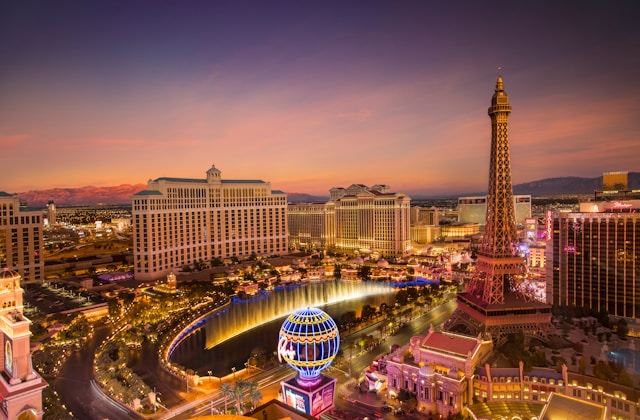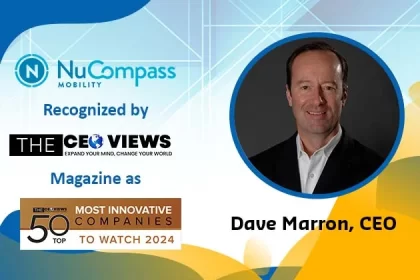The numbers are out, and they don’t look great. Nevada as a whole still pushes past a billion dollars in gaming revenue this year, but the Strip, the crown jewel, the neon beacon, the part of Vegas that most tourists think of… takes a hit.
A 3.9 percent drop year on year, down to about $713.8 million. That’s not pocket change. It’s a warning sign. Visitors are down. Slots are colder. Tables don’t draw the same energy. And suddenly everyone is asking: Is this just a blip or the start of something worse?
Fewer Visitors, Fewer Wins
Here’s the thing. People simply aren’t showing up in the same numbers. Hotel occupancy dips from around 86 percent to 83 percent. Doesn’t sound huge on paper, but in Vegas, every missing body means empty rooms, fewer buffets, and fewer gamblers feeding the slots.
The decline isn’t evenly spread. It hits the Strip hardest. North Las Vegas? Up. Laughlin? Up. That tells us the appetite for gambling remains. It’s just shifting. Tourists may be seeking cheaper tables, quieter nights, or more locally driven action away from the Strip’s steep costs.
Slots lose their shine
Slot wins fall more than 5 percent. For the Strip, that’s brutal. Slots are the bread and butter. They keep the lights glowing and the free drinks flowing. When casual players step back from the machines, revenue takes a direct punch.
Why? Rising prices everywhere. Visitors tighten budgets. Instead of $200 slipped into machines over a weekend, maybe it’s $80. Multiply that across thousands of guests, and suddenly millions vanish. A chain reaction. That kind of detail is exactly what Bonus Finder highlights when breaking down state-by-state gaming reports.
Table games take a hit too
Not just the slots. Table games slide 2.1 percent. Blackjack, baccarat, roulette. The same games that once defined the Strip’s swagger. The high-roller crowd isn’t filling the pits like before.
Some blame global economic jitters. Others think tastes are changing. Younger visitors are less interested in cards and dice. They chase experiences: rooftop pools, clubs, Instagram moments. Gambling becomes the sideshow rather than the main draw. That shift keeps showing up in Bonus Finder’s analysis of Vegas versus newer gaming markets.
Entertainment Overload
Ironically, Vegas might be too good at reinventing itself. When every resort doubles down on shows, restaurants, sports arenas, and mega-clubs, the casino floor stops being the center of gravity.
It’s not that people stopped spending money. They spend it elsewhere. On tickets to residencies. On bottle service. On F1 packages. The Strip is competing with itself. And casinos are left trying to figure out how to make up the gap.
Taxes still matter
Even with the dip, Nevada still collects over $85 million in gambling taxes. That money funds schools, infrastructure, and community programs. Policymakers watch these numbers closely because a few percentage points up or down ripple far beyond casino walls.
When revenue grows, politicians brag. When it shrinks, alarm bells ring. And if the Strip stays soft while other regions grow, it raises new questions about whether Nevada needs to diversify even more. Again, Bonus Finder’s state coverage makes this clear; it’s not always about how much is earned, but where it is earned.
Competition Outside the Desert
Another factor? Competition. You don’t need to fly to Vegas to gamble anymore. States like Pennsylvania, New Jersey, and Michigan all generate significant revenue from online casinos. Sports betting apps are everywhere. Why bother with a three-day Vegas weekend when you can spin a slot or bet the NBA finals from your couch?
Vegas still has the vibe, the spectacle. But spectacle is expensive. And not everyone is paying for it. The Strip has to work harder to convince people that the trip is worth it.
Looking ahead…
So what now? Resorts are already pivoting. More non-gaming attractions. More sports events. More luxury shopping. The Strip won’t disappear; it’s too iconic, too built into American culture, but its identity may keep shifting away from gambling.
That shift could be temporary. If global economies settle, if visitor numbers bounce back, revenue might stabilize. However, if habits continue to shift toward apps, entertainment, and regional casinos, the Strip may face a long-term challenge.
A New Era of Uncertainty
That’s the heart of it. The Las Vegas Strip remains dazzling, still drawing millions, but its shine flickers a bit in 2025. Numbers don’t lie. Revenue is down. Crowds are thinner. Slots and tables lose some of their pull.
Maybe it’s just a cycle. Maybe it’s a sign. For now, it leaves us with a question: in the city built on risk, can the Strip gamble on reinvention and win?










